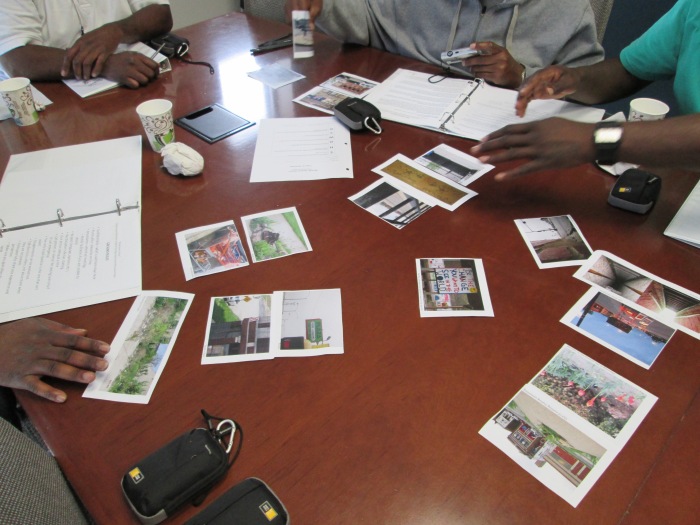
Participants discussing and grouping photos into common themes (June 2014)
Photovoice is a participatory action research methodology where community members are handed cameras and asked to photograph their everyday lived experiences and realities. Photovoice has three main goals:
- “to enable people to record and reflect their personal and community strengths and concerns,
- promote critical dialogue and knowledge about personal and community issues through group discussion of photographs,
- to reach policymakers” (Wang, 1999, p. 185).
Photovoice is based in the understanding that
- “images carry a message,
- pictures can influence policy, and
- citizens ought to participate in creating and defining the images that make healthful public policy”
(Wang, Morrel-Samuels, Hutchison, Bell, & Pestronk, 2004, p. 911).
 Voices and images, a photovoice collaboration between M. Brinton Lykes & Mayan Ixil women of Chajul (click for link)
Voices and images, a photovoice collaboration between M. Brinton Lykes & Mayan Ixil women of Chajul (click for link)
Photovoice was originally developed by Caroline Wang and colleagues in the Women’s Reproductive Health and Development Program funded by the Ford Foundation and used among rural village women in Yunnan, China. It has since been used worldwide among a variety of participant groups across the lifespan, including
- indigenous communities,
- individuals with HIV/AIDS,
- individuals experiencing homelessness,
- cancer survivors,
- low income urban youth, and
- older adults with chronic pain.
Photovoice has been used as a methodology in investigating public health and social justice concerns such as experiences of political violence, discrimination, access to healthy food, and disease epidemics. Photovoice reverses the power of traditional photojournalism by giving cameras to people who have traditionally been the subject of professionals’ photographs (Wang & Redwood-Jones, 2001).
For a brief video that illustrates photovoice, please see “From Snapshot to Civic Action”, a photovoice project conducted by the University of South Carolina and the Columbia Housing Authority
